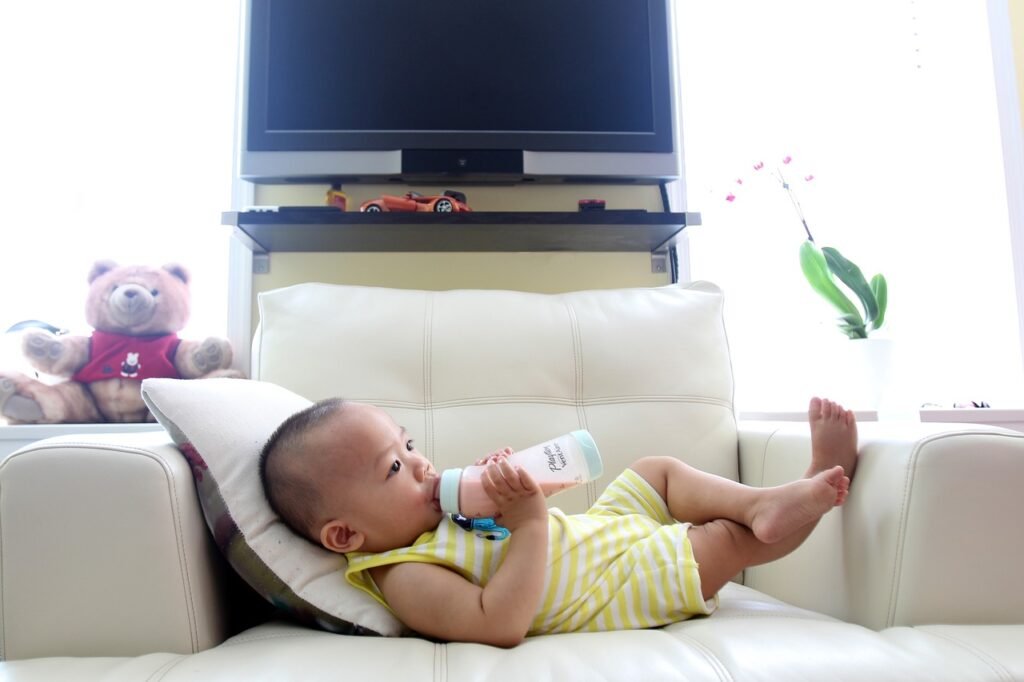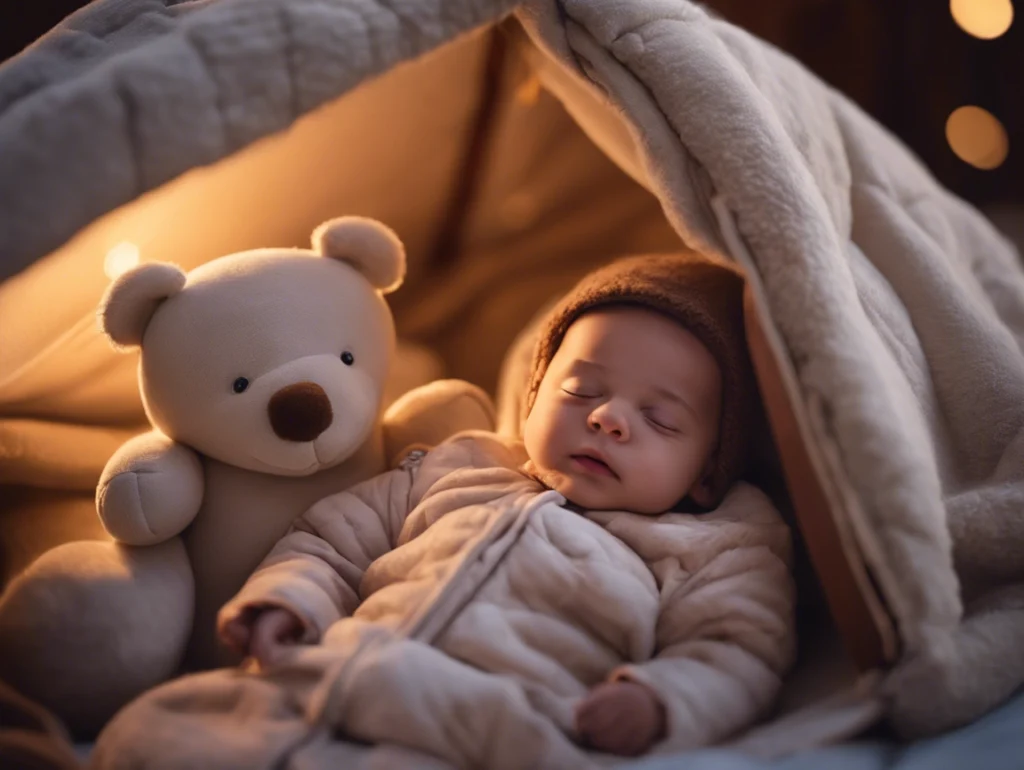Drooling: it’s messy, constant, and utterly adorable when paired with those gummy baby smiles. But as your baby grows, you might wonder, “When will my baby stop wearing drool bibs?” While drooling is a normal part of development, it doesn’t last forever. Spoiler alert: there’s light at the end of the bib-washing tunnel!
This comprehensive guide’ll discuss when babies typically outgrow drool bibs, what causes drooling, and practical tips for managing the dribble phase. Whether you’re navigating the early teething months or wondering if your toddler still needs a bib, we’ve got you covered.

Why Do Babies Wear Drool Bibs?
Drool bibs are a parenting essential for several reasons. They’re not just about keeping your baby dry—they’re about saving your sanity and your laundry pile.
1. Teething = Saliva Overload
Around 3–6 months, most babies begin teething, which leads to increased saliva production. According to the American Academy of Pediatrics (AAP), this is a normal part of your baby’s growth as their first teeth start pushing through their gums.
(Your baby’s drool production could rival a leaky faucet—it’s just one of the many ways they’re keeping you on your toes!)
2. Protects Skin from Rashes
Constant drool can irritate a baby’s sensitive skin, leading to red, itchy rashes around the neck and chin. Bibs with absorbent material and waterproof backing help protect their delicate skin while keeping them comfortable.
3. Saves on Laundry
Babies who drool heavily can soak through multiple outfits a day. Swapping out a wet bib is infinitely easier than changing your baby’s onesie for the third (or fourth) time.
For tips on managing laundry as a new parent, check out this guide on baby essentials.
When Do Babies Stop Drooling?
While every baby is unique, most stop drooling excessively between 18 months and 2 years, coinciding with the end of teething.
Drooling Timeline by Age
| Age Range | Reason for Drooling | Need for Drool Bibs? |
|---|---|---|
| 0–6 Months | Developing salivary glands | Essential for keeping dry |
| 6–12 Months | Teething (front teeth) | Heavy drool—bibs are a must |
| 12–18 Months | Teething molars | Use bibs as needed |
| 18–24 Months | Teething ends for most toddlers | Drooling slows significantly |
| 2–3 Years | Fully developed oral motor skills | Rarely needed |
(Your toddler might still drool occasionally while concentrating or during active play—this is normal!)
When Should Babies Stop Wearing Drool Bibs?
Most babies stop wearing drool bibs by 18–24 months, but the timeline can vary. Here are some signs that your baby might be ready to ditch the bib:
1. Drooling Becomes Infrequent
If your baby’s clothes are staying dry for longer periods, they may no longer need bibs throughout the day.
2. Teething Is Complete
When your baby has all their teeth (usually by age 2), drooling often decreases dramatically. Learn more about the teething process and remedies from the Cleveland Clinic’s Teething Guide.
3. Fewer Bib Changes
If you’re only swapping out bibs once or twice a day instead of constantly, it might be time to phase them out.
(If your toddler refuses to wear their bib, they might be telling you, “I’m over this!”)
Alternatives to Drool Bibs for Older Babies
As your baby transitions out of drool bibs, occasional drooling may still occur. Here’s how to manage it without relying on bibs:
1. Moisture-Wicking Fabrics
Dress your toddler in clothing made from moisture-wicking materials like bamboo or technical fabrics. These keep them dry without requiring bibs.
2. Skin Care for Drool Rash
If your toddler develops a drool rash, apply a protective barrier cream to the affected area. The Mayo Clinic recommends gentle, fragrance-free products to prevent irritation.
3. Use Soft Cloths for Cleanup
Keep a stash of soft, absorbent cloths handy for quick drool cleanups. These are especially useful during teething or snack time.
Choosing the Right Drool Bibs for Every Stage
Before your baby completely outgrows bibs, make sure you’re using the right type for their needs.
| Stage | Best Bib Type | Features to Look For |
|---|---|---|
| Newborns (0–3 Months) | Small, soft bibs | Lightweight and adjustable for small necks |
| Teething Babies (4–12 Months) | Absorbent bandana bibs | Waterproof backing to catch heavy drool |
| Messy Eaters (6–18 Months) | Long-sleeved bibs | Full coverage for food and drool |
| Toddlers (18+ Months) | Minimalist drool bibs | Easy-to-clean designs, simple patterns |
(Stock up on waterproof-backed bibs for teething babies—it’s a game-changer!)
FAQs About Drool Bibs
1. How long do babies need drool bibs?
Most babies need drool bibs from 3–18 months, though some may wear them until age 2 during late teething stages.
2. Can drool bibs cause irritation?
If made from rough fabrics or worn too tightly, bibs can irritate your baby’s skin. Look for soft, adjustable designs to ensure comfort.
3. Do all babies drool a lot?
Not all babies are heavy droolers, but most experience increased saliva production during teething. Check out HealthyChildren.org for more on teething symptoms and solutions.
4. How do I clean drool bibs?
Machine wash bibs with a baby-safe detergent, and air dry to maintain their shape and quality.
5. Are drool bibs eco-friendly?
Many brands now offer bibs made from sustainable materials like organic cotton or bamboo, which are both eco-friendly and gentle on your baby’s skin.
Conclusion: When to Retire the Drool Bibs
Babies typically stop needing drool bibs between 18 and 24 months, when their teething slows and their saliva production normalizes. Until then, drool bibs are a lifesaver for keeping your baby dry, comfortable, and adorable.
Whether your little one is a teething tornado or a light dribbler, drool bibs are a small but mighty parenting tool. And when the time comes to retire them, you’ll know you’ve survived one of many messy milestones!
(Explore our collection of stylish, durable drool bibs at Endearing Baby to make the drooling stage a breeze!)


